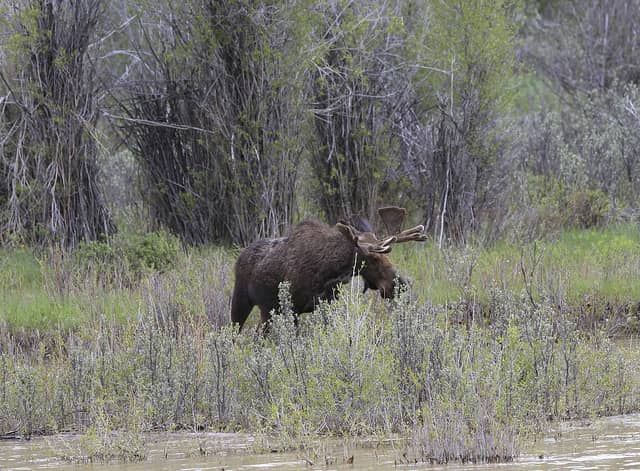Hunting the Big Dog in the Forests of Vermont
Northeast Hunting 07.22.11

The moose are in abundance in early October in Vermont. Using a moose call might do the trick for some, but sometimes this is not enough to make the catch you’re looking for.
Scratching nearby trees with large sticks and logs and breaking brush in front of you might show the moose the inner strength of the moose you’re trying to make them fall in love with. Those moose looking for love will surely find this little dance and the calls intriguing when looking for a mate. The more you know about the moose, the better off you’re going to be when it comes to tracking and hunting them in the end.
Facts about Moose
There are four species of moose that can be found throughout North America. Their scientific name is Alces alces, and has no other predators to worry about in the forests.
They have a lifespan of 15 to 25 years and a mature male can weigh around 1,000 pounds and a female weighs in around 900 pounds. They are in the deer family, and the largest of their kind. They are herbivores and can adapt to almost any climate. They are able to run up to 35 miles per hour, and swim 10 miles per hour.
Maine and Vermont have one of the best hunting opportunities for moose out there. Moose are widely spread across the northern part of the continent and a lot of these moose surround the boreal forest because of the wetlands.
Although thought to only inhabit areas with evergreen cover, a lot of moose are thriving in mountain and foothill regions. These places are open year round to allow hunters to find the moose they are after. A hunter might look for swamp spruce and willows to find the moose that are in packs.
What to Look for
When trying to locate moose, you want to know what to look for. The first and best place to begin is looking at the ground. Their droppings will give them away.
Testing their firmness and whether or not they are warm will allow you to know just how close they are. Tracks are another way to find out how close moose are. Moose tracks measure about 6 inches long and 4 inches wide. Look for shrubs that have been chewed off about chest height while out in the wilderness to find out if a moose has been there or not, and in the lush greens of Vermont, there are plenty of places to look.
During the warmer months, you can find moose hanging out by the mineral licks. Breeding comes along in late September. This will bring along moose antler rubbings on many different trees and shrubs in the area. They are usually three to seven feet high.
Moose are curious by nature. They will always stop to inspect anything around them. Calling for moose during the hunting seasons is not only the best way to stop them from what they are doing, but also to peak their curiosity.
The mature moose will stop right in their tracks to look for the sound and find where it is coming from. It is usually around 40 yards. Moose however, will be able to smell a hunter so they should stay downwind when calling the moose so they do not come charging.
The Best Time to Hunt for Moose
The peak of the rut is the favorite time to hunt for moose for many hunters. They have three weeks of opportunity to hunt moose. Calling to moose to attract them works the best towards the end of September to mid October. This is because this is the breeding time for the moose. Being in the woods during this time might be the best time for any moose hunter to take advantage of the moose that are looking for mates.

